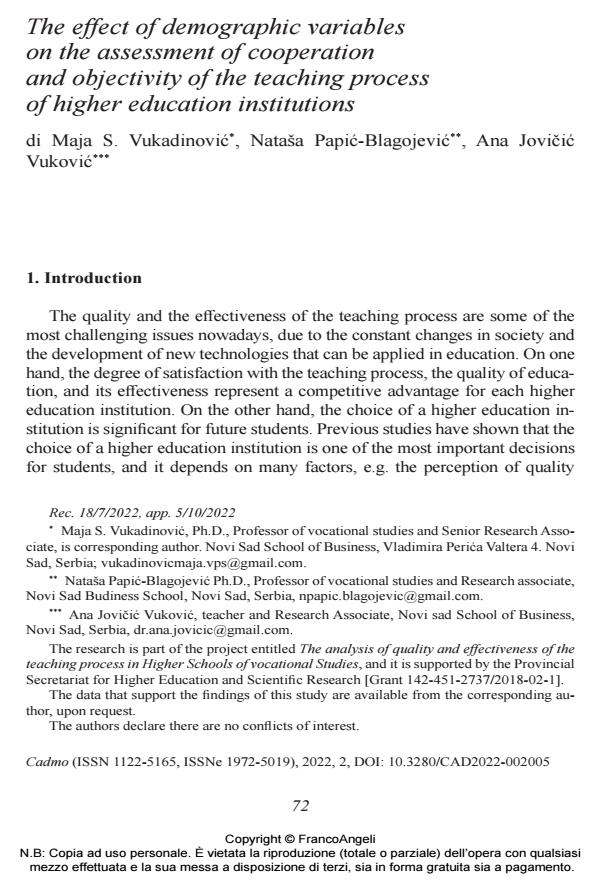The effect of demographic variables on the assessment of cooperation and objectivity of the teaching process of higher education institutions
Titolo Rivista CADMO
Autori/Curatori Maja S. Vukadinovic, Natasa Papic-Blagojevic, Ana Jovicic Vukovic
Anno di pubblicazione 2023 Fascicolo 2022/2
Lingua Inglese Numero pagine 13 P. 72-84 Dimensione file 201 KB
DOI 10.3280/CAD2022-002005
Il DOI è il codice a barre della proprietà intellettuale: per saperne di più
clicca qui
Qui sotto puoi vedere in anteprima la prima pagina di questo articolo.
Se questo articolo ti interessa, lo puoi acquistare (e scaricare in formato pdf) seguendo le facili indicazioni per acquistare il download credit. Acquista Download Credits per scaricare questo Articolo in formato PDF

FrancoAngeli è membro della Publishers International Linking Association, Inc (PILA)associazione indipendente e non profit per facilitare (attraverso i servizi tecnologici implementati da CrossRef.org) l’accesso degli studiosi ai contenuti digitali nelle pubblicazioni professionali e scientifiche
This study explores the effect of demographic variables on the students’ assessments of cooperation and objectiveness regarding the teaching pro- cess in higher education institutions. The study included 361 students, aged between 18 and 24, who were mostly women (64.8%). Demographic vari- ables measured were gender, the year of study, the model of financing, place where they live, previous education and higher education institution they currently attend. The effectiveness of the teaching process was measured by the students’ ratings of cooperation (cooperation, collegiality, teamwork and creativity) and objectiveness (objective grading system, availability of professors, quality and knowledge). The students evaluated each of these on a fivepoint Likert scale (1 = strongly disagree; 5 = strongly agree). The results have shown that the institution which students attend has a strong ef- fect on their ratings of cooperation and objectiveness. Possible directions for improving the teaching process and its outcomes are disscussed.
Parole chiave:demographic variables, cooperation, objectiveness, students, teaching process, higher education institutions.
- Entrepreneurship and Development for a Green Resilient Economy Nataša Papić-Blagojević, Biljana Stankov, pp.181 (ISBN:978-1-83797-089-6)
- The Quality of Online Higher Education Teaching during the COVID-19 Pandemic: Evidence from Serbia Ana Jovičić Vuković, Jelena Damnjanović, Marija Vranješ, in Acta Educationis Generalis /2024 pp.83
DOI: 10.2478/atd-2024-0020
Maja S. Vukadinovic, Natasa Papic-Blagojevic, Ana Jovicic Vukovic, The effect of demographic variables on the assessment of cooperation and objectivity of the teaching process of higher education institutions in "CADMO" 2/2022, pp 72-84, DOI: 10.3280/CAD2022-002005